The UEFA Champions League returns to Old Trafford as Manchester United host Barcelona in what promises to be an epic encounter between two teams vying for European supremacy once again. Barcelona will be looking to reclaim their throne at the top while Manchester United will look to continue their fairy tale after a rollercoaster season which looked bleak under José Mourinho but has turned around with the inspirational Ole Gunnar Solskjær.
Both teams have reached the quarter-final stage under different circumstances. Barcelona dealt with a spirited Lyon side that put up some resistance but ultimately failed to overcome the Catalan giants.
Manchester United, however, came back from the brink and completed mission impossible when they managed to beat Paris Saint-Germain 3-1 at the Parc des Prince with an injury-time penalty from teenage sensation Marcus Rashford. No one expected the English giants to progress through to the next stage but Ole Gunnar Solskjær’s positive effect on the team has imbued a level of confidence bereft since the days of Sir Alex Ferguson.
The quarter-final represents a chance for both teams to showcase their talents on the grand stage. There are no easy matches but Barcelona will be hoping for a positive result at Old Trafford after their opponents’ loss to the mighty Wolves last week. Manchester United’s form has dipped of late but they have more often than not come alive when the big games come around.
Barcelona represents another opportunity for Manchester United to add on to their impressive string of performances. Barcelona will look to carry the momentum from their hard-fought victory over Atlético Madrid on Saturday and hope to put in the same level of performance tonight. This feature will preview the strengths and weaknesses that both teams can exploit and expose.
“Physically they are really strong and they know how to put pressure on their opponents. They have players who are physically very powerful, and they can be dangerous strategically as well.
“This match is a classic in European football. Barcelona have never won at Old Trafford I believe and we are going to try and change that.” – Ernesto Valverde
Small margins
The clash between the two European heavyweights is one that will be decided by the finer details. Manchester United can ill afford to allow Barcelona any extra space with their elaborate and technical players lurking to pounce on any given opportunities given the frailties of United’s defensive line.
Since coming on as caretaker and now permanent manager, Solskjær has overseen a turnaround of results guiding the club to 14 wins in 19 matches. Granted, they have suffered three losses at the hands of Paris Saint-Germain, Arsenal and Wolves – the latter two results coming in successive weeks – but the overall feeling around the club is one of resurgence.
Manchester United will look to take notes from Barcelona’s victory against Atlético Madrid. Even though Diego Simeone’s side lost, they frustrated the Catalan army for well over an hour as they sat deep and soaked up pressure. Atlético Madrid may have ridden their luck at times but Simeone almost pulled off an unlikely draw.
Manchester United and Solskjær will revert to their 3-1 away win at Paris Saint-Germain. The Norwegian coach will look to repeat the tactics used there whereby he allowed Paris Saint-Germain possession and encouraged his team to beat them on the break. Barcelona will be dominant and claim heavy ball possession and tire Manchester United, but there will be spaces for the Red Devils to exploit, mainly out wide.
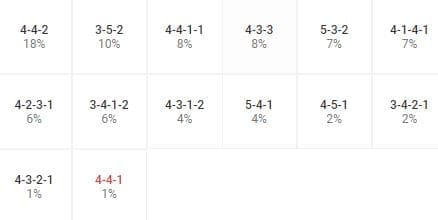
Barcelona, on the other hand, have not tasted defeat since their loss to Real Betis on 11 November 2018. They were on the brink of defeat before Lionel Messi preserved their record in dramatic fashion to draw 4-4 with Villareal. Atlético Madrid were on course to secure a well-earned draw at the Camp Nou but moments of brilliance from Luis Suárez and Messi ensured three points stayed in Barcelona.
Despite playing against 10 men, Barcelona struggled to breakdown a stubborn Atlético Madrid defence and it took a lapse in concentration from Thomas Partey that allowed Suárez to score the first goal. Manchester United will have to face this onslaught for 180 minutes but may be inspired by the weekend’s events and look to replicate the Madrid team’s game plan.
Team News
Manchester United
Solskjær has tinkered with his team tactically looking for the right formation, and has seemingly settled on a 4-3-1-2 having used it five times already. The Norwegian manager has used up to five different formations and adjusts his team based on injuries but the 4-3-1-2 formation looks to suit the players he has at his disposal.
He attempted to match Nuno Espírito Santo’s 3-4-1-2 formation against Wolves last week but came up short losing 2-1. The idea behind it wasn’t terrible, rather the execution was poor. Ashley Young playing at right centre-back lacked the positional sense to play the position leaving gaps for the Wolves forwards to exploit. I expect Solskjær to continue using the 4-3-1-2 formation against Barcelona that did end up undoing Arsenal, Chelsea and frsutrating Liverpool in the Premier League.
United had a raft of injuries for their weekend trip to the Molineux but Marcus Rashford and Ander Herrera are expected to return to the starting XI. Alexis Sánchez is still nursing a knee injury that has kept him out for nine matches spanning 49 days. The Chilean is expected to return on 21 April. Luke Shaw and Ashley Young are both available with their suspensions only valid for domestic competition and should start in their respective full-back areas.
Starting XI: De Gea; Young – Lindelöf – Smalling – Shaw; Herrera – Matić – Pogba; Lingard –Martial –Rashford.
Barcelona
Barcelona played with a 4-3-3 formation using Philippe Coutinho on the left wing and managed to eventually breakdown a stubborn yet lucky Atletico Madrid side in their La Liga outing last week. Ernesto Valverde rested Nelson Semedo over the weekend with a possibility of starting him against Manchester United.
The only other contentious point is the selection of the third attacker alongside Lionel Messi and Luis Suárez. Coutinho has performed well in his last two outings while Ousmane Dembélé’s selection will be based off a final fitness test. If fit, the French winger should get the nod ahead of the Brazilian.
Pace will be the bane of United’s full-backs and Malcolm could be a surprise inclusion but the most likely outcome will see Philippe Coutinho retain his place in the starting lineup.
Starting XI: ter Stegen; Alba – Piqué – Lenglet – Semedo; Busquets – Rakitić – Arthur; Coutinho – Suárez – Messi.
Pressing the right buttons
For Manchester United to have any semblance of hope in getting a result at Old Trafford, they will need to be alert for 90 minutes. The Red Devils will need to replicate their game plan of allowing Barcelona into their half before suffocating the space for Barcelona’s midfield to work.
Usually pressurising the centre-backs Gerard Piqué and Clement Lenglet is vital in forcing Barcelona into a mistake and doing it at home would be easier. However, with the lack of quality personnel at their disposal it may be wise for them to not expend too much energy. However, an attempt to limit the time on the ball should be made if an opportunity presents itself.
A hard-working attacking midfielder would be most adept in forcing the press from the top along with either striker allowing the midfield trio of Pogba, Herrera, and Matić to start the next phase of pressing. Many teams have tried to press Barcelona with some success. Most recently, Villareal looked to implement this applying a low-block, high pressing system aimed at keeping Barcelona in and around the middle third.
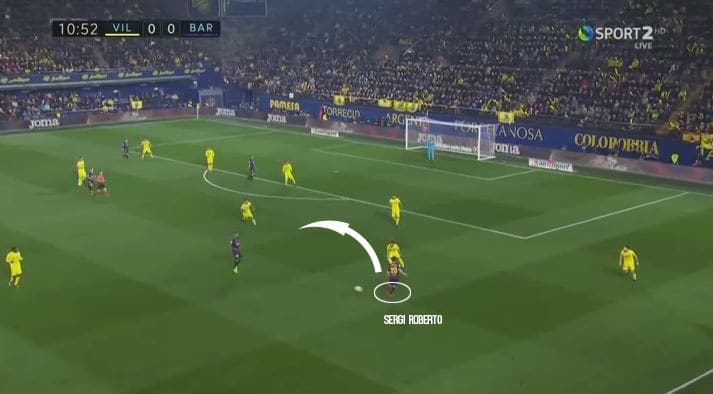
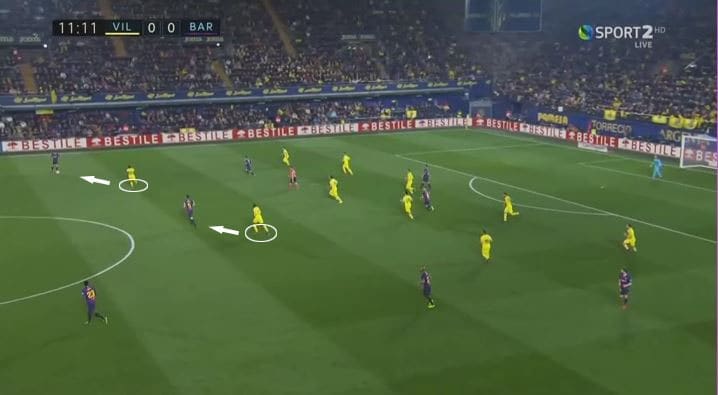
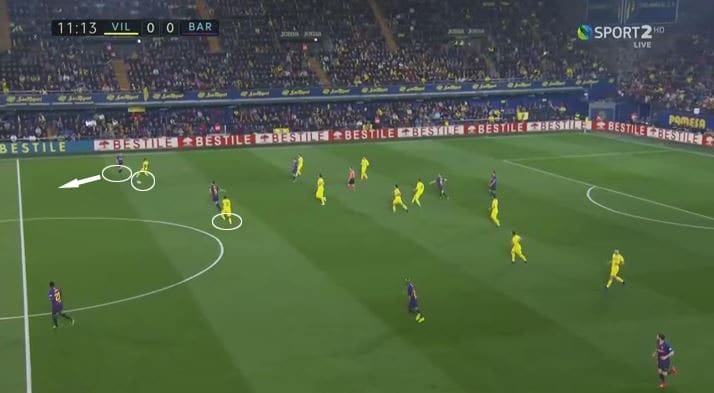
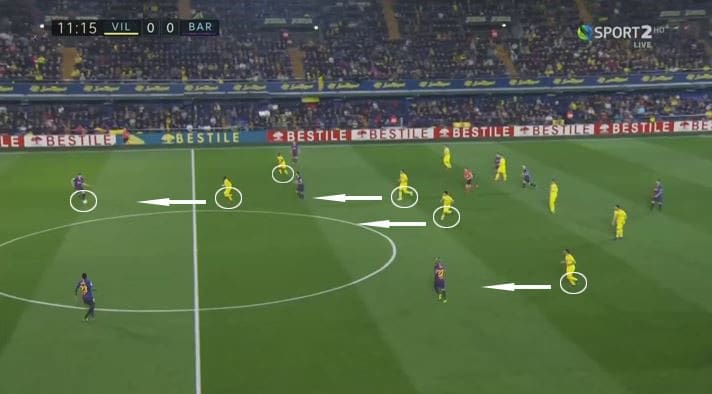
Here we can see Villareal looking to force Barcelona to switch play and move backward in order to slowly push themselves higher up the pitch. Starting with the strikers, who worked incredibly hard to not allow the likes of Philippe Coutinho and Arturo Vidal to rest pushing the ball from right to left. Their perfect shape and organisation attested to this but later they grew tired and conceded. The initial idea can be accomplished but requires incredible stamina.
In the FA Cup, Manchester United allowed Chelsea possession of the ball and looked to press them using their three central midfielders. In this example, Matić looks to dispossess Jorginho with ease with Paul Pogba coming around to help the ball forward and start a counter-attack.
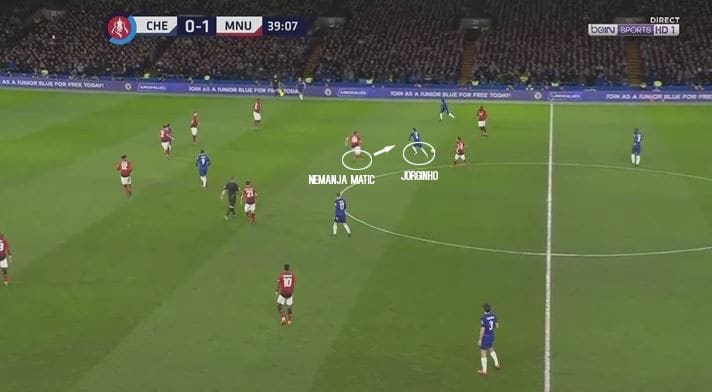
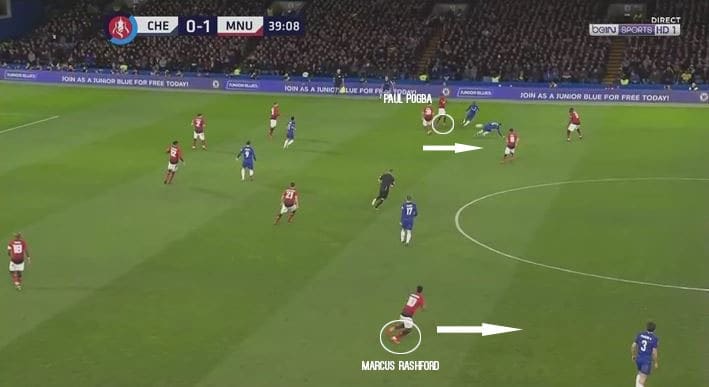
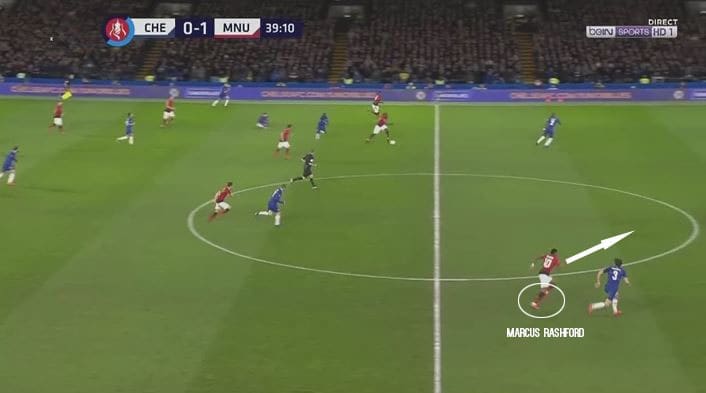
Catching Barcelona when they have men committed forward with a fast breakaway can be United’s main hope of getting a goal. During different moments of the season, Barcelona have been susceptible to counter-attacks when they’ve lost the ball in the opponents’ final third.
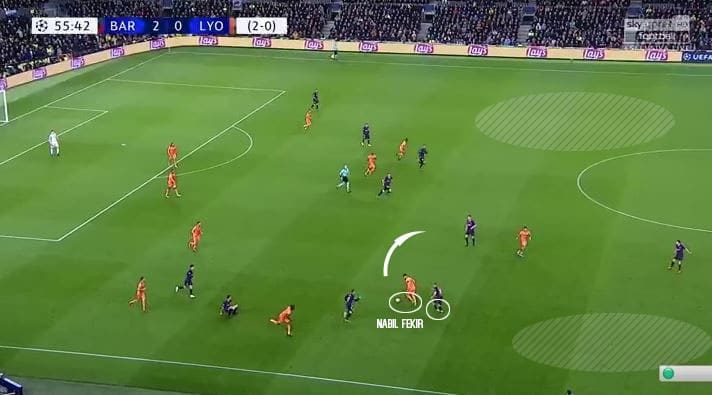
Earlier in the Champions League, Lyon looked to produce an encouraging performance across two legs giving Barcelona a slight scare but came undone in the second leg at the Camp Nou. However, this example gives us a glimpse of how the counter-attack can be the potential undoing of Barcelona.
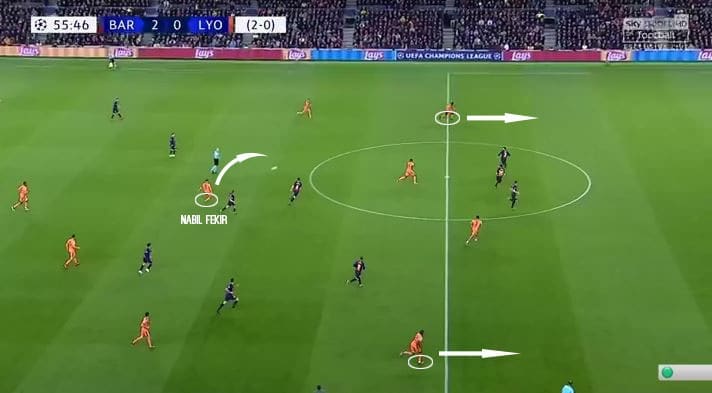
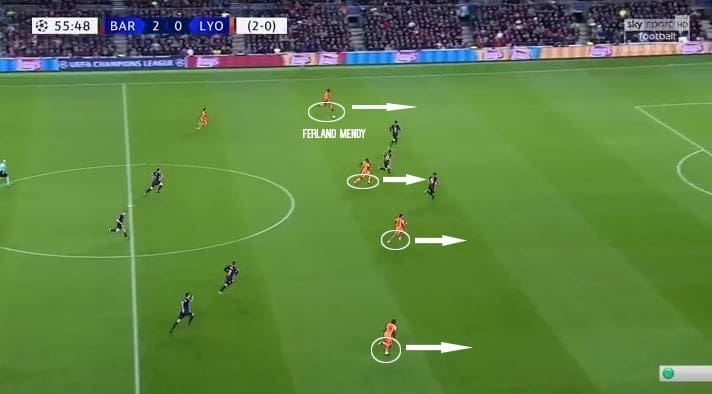
As Lyon win the ball deep, Nabil Fekir looks to exploit the acres of space Barcelona’s full-backs have left open due to their naturally higher positioning. Ferland Mendy looks to run into space and this counter-attack creates a 4v3 situation. The French side were able to undo Paris Saint-Germain earlier in the season with their quick transitions and counter-attacking ability.
Many teams have struggled to finish these opportunities, but Marcus Rashford has become one of the most dangerous number nines in the Premier League this season, especially under the guidance of Solskjær. This brings us to our next point: Marcus Rashford and his pace.
Marcus Rashford’s counter-attacking ability
Marcus Rashford’s resurgence under Solskjær has been more than just his goal return. The English forward has been much more prominent in the final third with his dynamism and off-the-ball movements. A change in formation to a 4-3-1-2 formation has seen Rashford thrive. Having a strike partner in Anthony Martial has helped Rashford make darting runs off the shoulder of defenders allowing him space and time to use his pace.
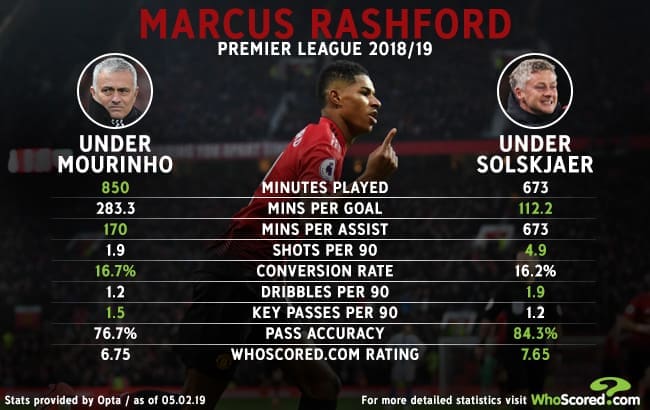
Even though these statistics are comparative and only valid up until 5 February 2019, Rashford has only added to that tally contributing one assist and an additional three goals. According to the statistics, Marcus Rashford looks to be Manchester United’s most potent attacking threat but what makes him so dangerous?
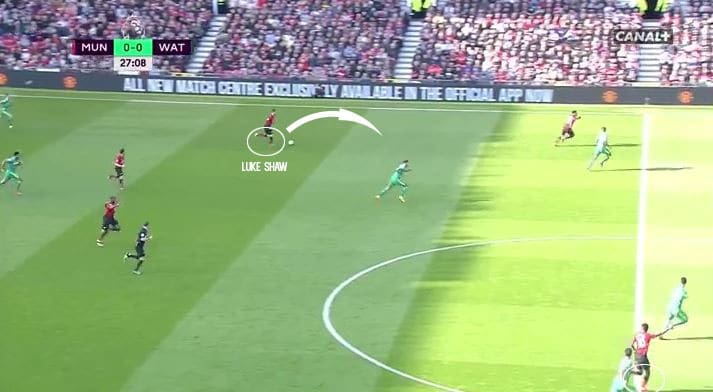
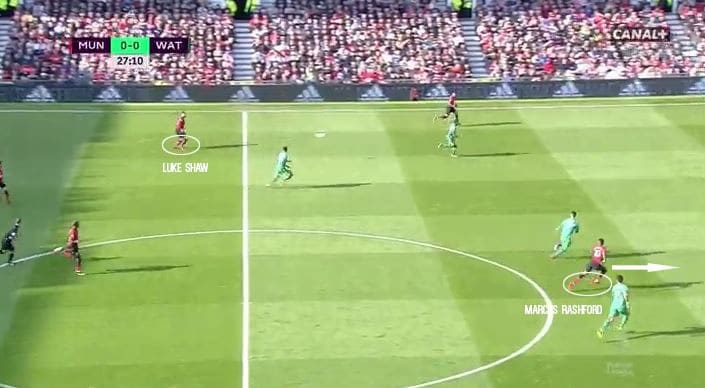
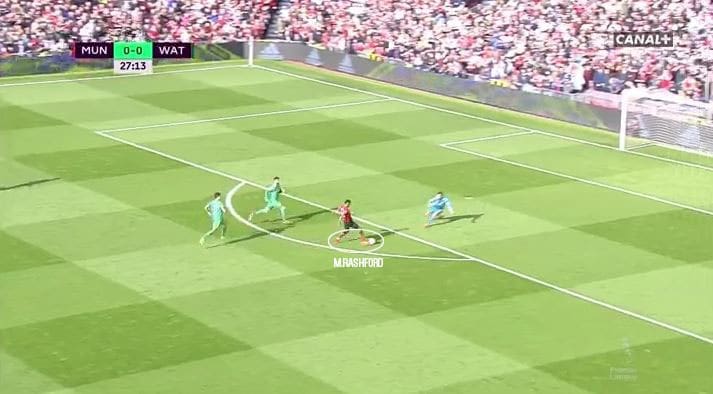
Manchester United are defending an attack from Watford but a well-timed tackle from Luke Shaw gets them on the counter-attack. At this point, you can see Rashford already knows where he wants the ball played. He times his run by accelerating after Shaw has released the ball. His movement between the two centre-backs is impeccable and he slots the ball under Ben Foster to score.
The United forward has become a fundamental component of Manchester United’s attacking lineup. Alongside Jesse Lingard and Anthony Martial he has formed a potent attacking trident that has caused issues for many teams with their movement, pace, and dynamism.
Can the Catalans be stopped?
Barcelona possess their own dangerous attacking duo in Lionel Messi and Luis Suárez. The two have been in devastating form contributing to a total of 90 goals in the 2018/19 season to date (66 goals and 24 assists). No team has been able to keep either player quiet with Atlético Madrid the latest victims.
However, having spoken to our resident Barcelona expert – Domagoj Kostanjšak – there is a claim that Barcelona can be beaten using a three-man defensive system. The critical element comes down to the quality of the players available to the manager.
Manchester United’s defensive unit has been inconsistent and shaky throughout the season with the likes of Chris Smalling and Phil Jones struggling. Ashley Young has become the first choice right-back at the club showing the personnel available to them. Luke Shaw and Victor Lindelöf’s resurgence has been the only highlight in an otherwise poor defensive performance.
Pogba vital while Rakitić & Busquets hold key for Barcelona
One of the more interesting battles will be in midfield where multiple individual battles will form to make the game highly contested. Paul Pogba will once again be a fundamental part of Manchester United’ attacking hopes to link play between midfield and attack. It will be important for Barcelona’s duo of Ivan Rakitić and Sergio Busquets to be positioned impeccably throughout the match to be able to track Pogba’s runs and deny him space and time to create 3v1 situations against Nelson Semedo.
Luke Shaw and Paul Pogba have combined well in recent matches and along with one of Martial or Rashford have done well to create pockets of space in the half-spaces. This has pulling players out of position. However, even on the counter-attack, the pace of the front three and Pogba could form a considerable threat.
The Barcelona defence and midfield will need to be wary of this threat. Ivan Rakitić and Sergio Busquets are usually positionally sound and will look to be in areas where they can recover easily if dispossessed.
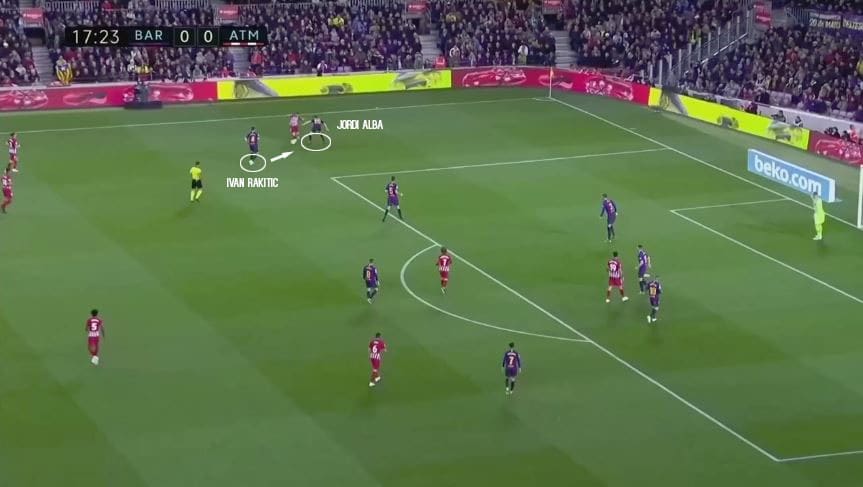
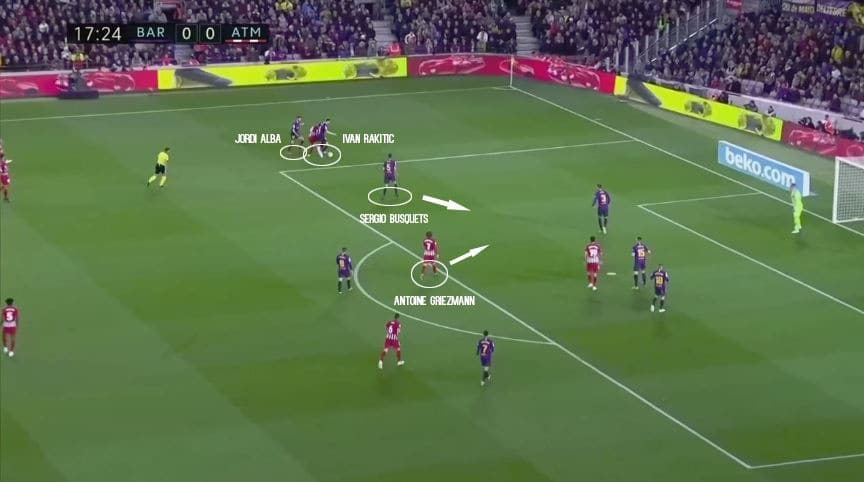
Here, Jordi Alba is one-on-one with Filipe Luis who seemingly needs to beat his man to find space to cross. Ivan Rakitić moves from his central position to support Alba and provide the necessary cover to ensure he doesn’t get past. Additionally, Sergio Busquets has dropped in to cover the space between the Barcelona centre-back and full-back making himself an extra layer of security. This potentially blocks a running opportunity for Antoine Griezmann.
However, if left unchecked Paul Pogba can become a nuisance for Barcelona’s centre-backs. His late runs into the opposition area combined with his movement have seen defenders bamboozled and confused. His relationship with the Manchester United forwards has become evident, especially with Marcus Rashford. The two have combined on multiple occasions giving United an attacking threat from both midfield and attack.
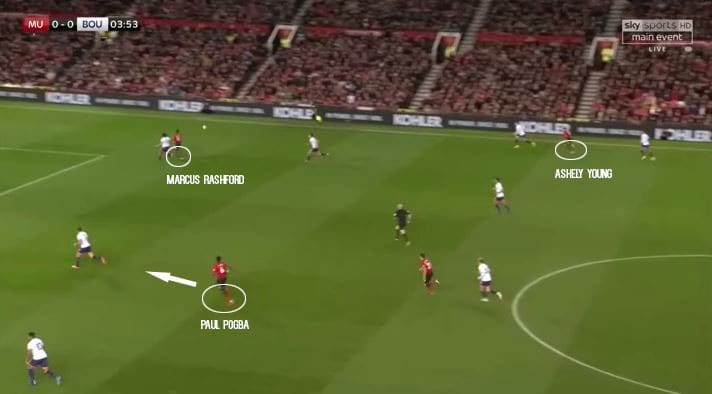
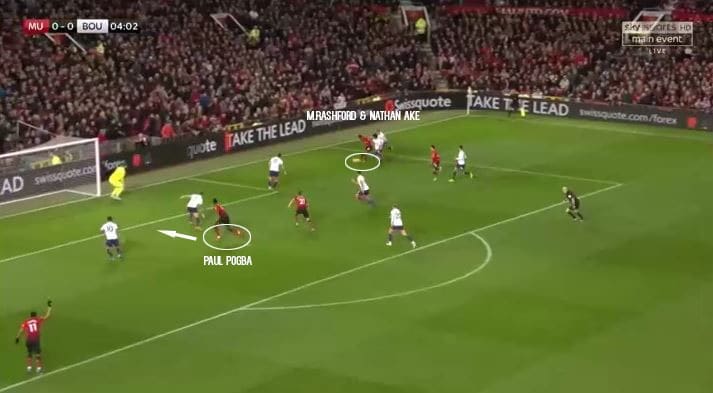
Bournemouth showed us how Pogba’s runs can be a cause for concern for Barcelona. As Manchester United play out from the back, Ashley Young plays a long pass down the wing to Rashford who is one-on-one with Nathan Aké.
After evading the Dutch defender’s challenge he escapes Diego Rico’s attention too. Every Bournemouth player is fixated on Rashford, but the ball to Pogba allows the Frenchman a free run into the six-yard area to score a tap-in.
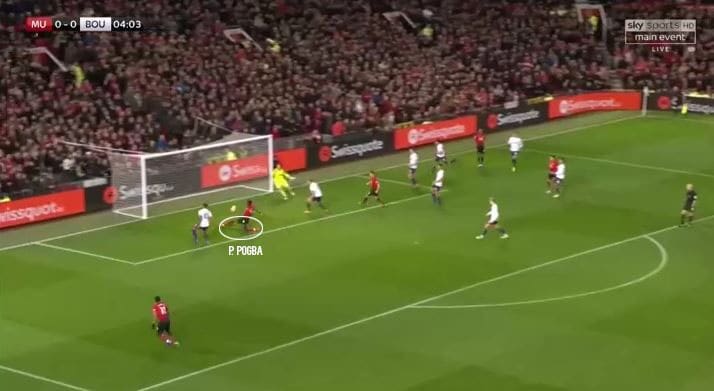
Barcelona will need to wary of these runs into the channels given the forward’s preference to work in the half-spaces, combined with the empty spaces in behind the Catalan full-backs. Rashford’s positioning and movement are impeccable and allow Pogba to launch accurate deliveries into his path knowing that Rashford will latch onto them. This allows Pogba to make his own trademark run into the opposition’s penalty area and wreak havoc.
Too much space?
Manchester United looked to suffocate the spaces against PSG in their own third using the energy of Andreas Pereira and changing shape from a 4-3-3 to a low-block 4-4-2. These two banks of four caused PSG to play in and around the half-way line. This prevented Dani Alves and Juan Bernat from stretching play. Repeating this method against Barcelona’s full-backs could work again as the game wears on.
The two full-backs are potent attacking threats in any system with Alba particularly pushing high. He can afford to do so because of the average possession Barcelona usually hold per game. However, this is an area they need to be wary of as United’s explosive forward line has the potential to exploit the wide areas.
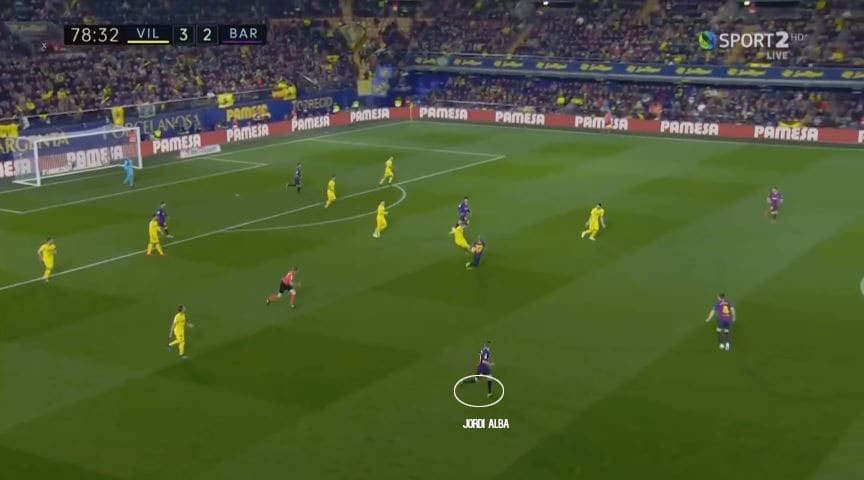
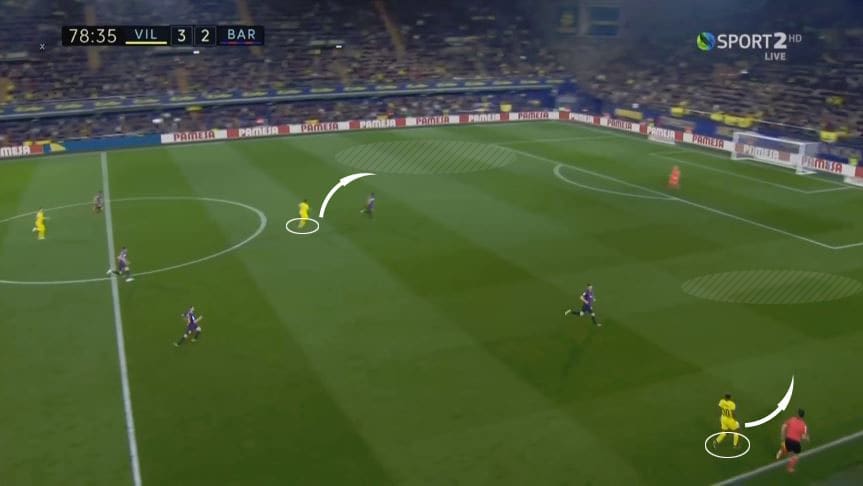
Here we can see Villareal taking advantage of this situation. We can see both Jordi Alba and Sergi Roberto both high up the pitch. With one long pass, Villareal are able to utilise the empty spaces out wide and the unorganised defensive positioning.
Predictions
Under Solskjær, Manchester United have become tactically adept and disciplined but have lacked consistency against the top sides. The United manager will hope his team turns in a performance not too dissimilar to the second leg in Paris and bring back the spirit of 1999.
With Barcelona looking for their first Champions League trophy since 2015 when they faced Juventus, the pressure will be on the visiting team to start well and look to settle in quickly. Ernesto Valverde’s side will want to finish the tie tonight leaving nothing to chance in the second leg. However, as we saw against Paris Saint-Germain, Manchester United have the ability to carve out unexpected results when the stakes are at their highest.
For all the reasons mentioned above and taking all the factors into consideration, I will opt for a 3-1 away victory for Barcelona. I can’t see the home side keeping Lionel Messi and company quiet for too long. However, if Manchester United can repel their attacks and nick a late second goal, they have every chance to nick a result at the Camp Nou.
Lyon did well to draw at home to Barcelona in the last round. However, United would be wise to turn back the clock and review the infamous Chelsea versus Barcelona semi-final from 2012 where the English side managed to pull off one of the most incredible comebacks in Champions League history.
If you love tactical analysis, then you’ll love the digital magazines from totalfootballanalysis.com – a guaranteed 100+ pages of pure tactical analysis covering topics from the Premier League, Serie A, La Liga, Bundesliga and many, many more. Pre-order your copy of the April issue for just ₤4.99 here, or even better sign up for a ₤50 annual membership (12 monthly issues plus the annual review) right here.

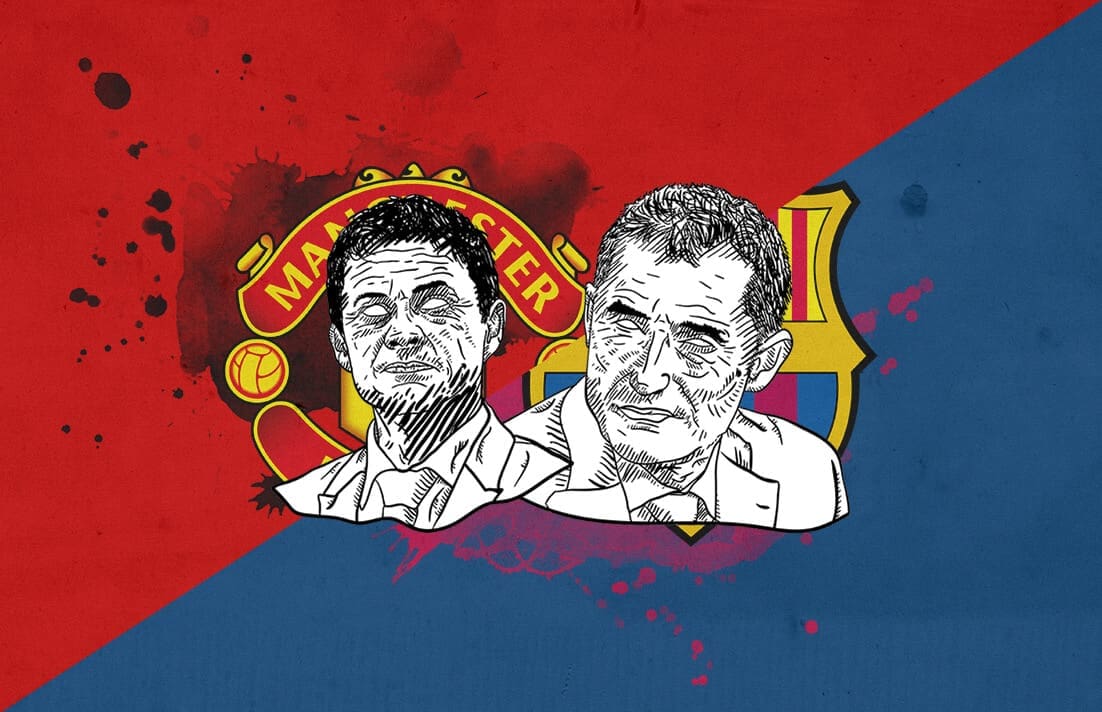




Comments